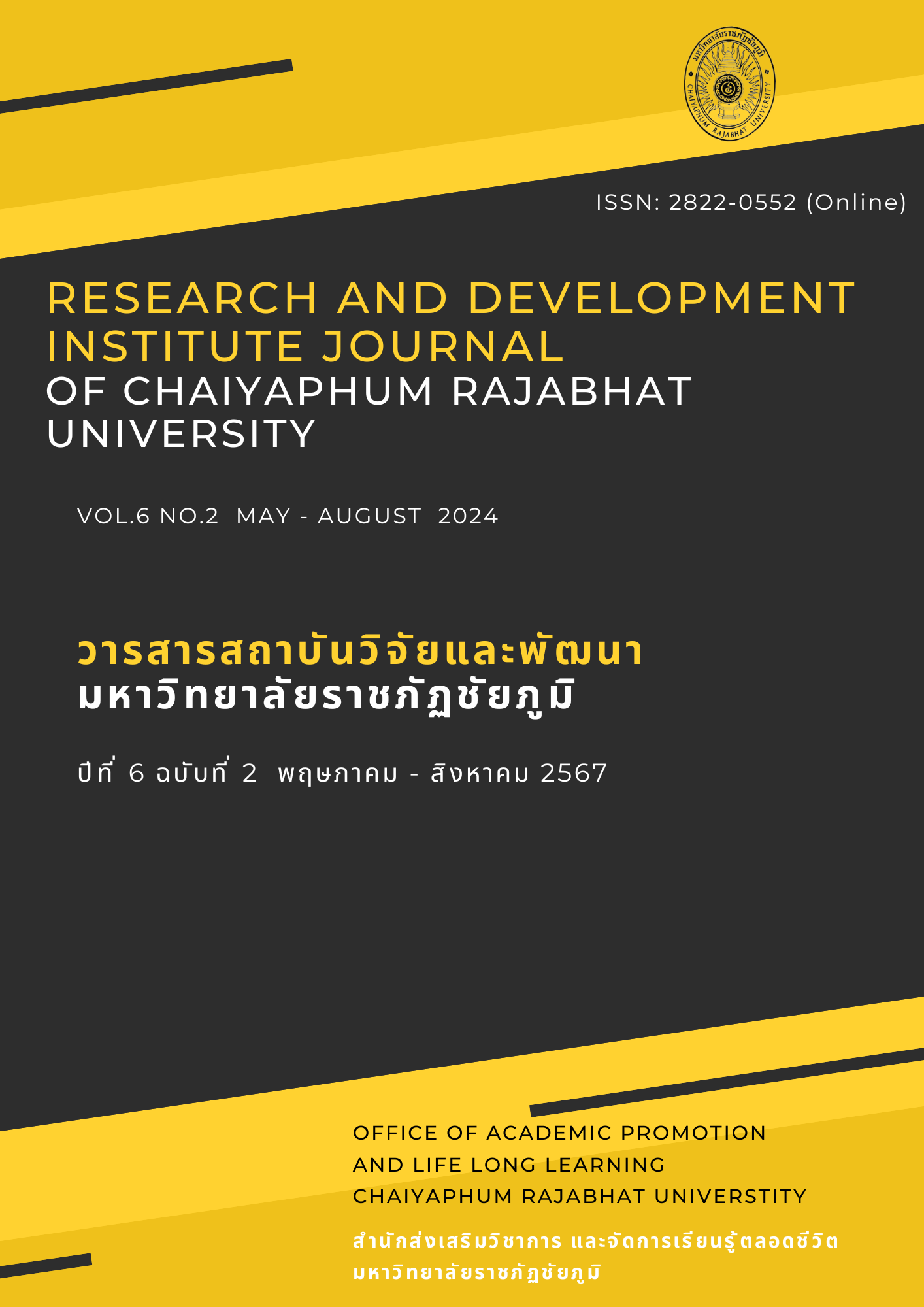EFFECTS OF TRAINING WITH A NINE-BOX GRID APPLIED TO LIFT HEIGHT ON PHYSICAL FITNESS LEG MUSCLE STRENGTH AND REACTIONS IN STUDENTS STUDYING HANDBALL
Main Article Content
Abstract
The purpose of this study is to study and compare the differences between the leg muscle strength of students before and after the use of a nine-square applied field. In this study, the nine square applied fields are raised. The sample group being used for this study is students of the Thailand National Sports University Chaiyaphum Campus. The sample group, consisting of 60 students, will be obtained by a simple random sampling method. The students in the sample will use the table training program. The researcher tested 60 participants to measure their leg muscle strength and reaction before and after entering the scheduled training program where they raised nine square applied fields. Nine square applied channels were raised for 8 weeks, 3 days a week, on Tuesday, Wednesday, and Thursday from 17.00 - 18.00 hrs. After the 8th week of training, the researchers tested the leg muscle strength and reaction of all 60 research participants. They used the test results to analyze data with mean standard deviation and calculate the difference of the average t - test dependent.
The study indicated that the nine square applied field training program contributed to increased strength of the leg muscles and reactions of the sampled students at Thailand National Sports University Chaiyaphum Campus. The results were found by testing the leg muscle strength of the participants after the training and comparing them against the original leg muscle strength data. The final results showed that the original results were slightly lower than the results obtained after the training program. There was a small variation, an increase of (P<.05) after the training program had been completed. It suggests using a nine-box grid for training. A high lift improves the strength and reaction of the leg muscles, thereby improving physical performance.
Article Details

This work is licensed under a Creative Commons Attribution-NonCommercial-NoDerivatives 4.0 International License.
Permission to use text, content, images, etc. of publication. Any user to read, download, copy, distribute, print, search, or link to the full texts of articles, crawl them for indexing, pass them as data to software, or use them for any other lawful purpose. But do not use it for commercial use or with the intent to benefit any business. Published under a Creative Commons Attribution-NonCommercial-NoDerivatives 4.0 International License.

This work is licensed under a Creative Commons Attribution-NonCommercial-NoDerivatives 4.0 International License
References
จิดาภา ศิริวรรณ์. (2562). ผลของไซมอนเอฟเฟคทางการ ได้ยินที่มีต่อเวลาปฏิกิริยาและความถูกต้อง ของการตอบสนองในนักกีฬาฟุตซอลเพศชาย. https://digital.car.chula.ac.th/chulaetd/9484/
วันเพ็ญ สุวรรณชัยรบ และจิรวัฒน์ ขจรศิลป์. (2563). ผลของการฝึกตาราง 9 ช่องที่มีขนาดต่างกันควบคู่กับการฝึกความอ่อนตัวที่มีต่อความคล่องแคล่วว่องไวในกีฬาวอลเลย์บอล. วารสารวิชาการบัณฑิตวิทยาลัยสวนดุสิต, 16(1), 163-176.
ศิราเมษฐ์ ม่วงสุวรรณ์. (2564). การเปรียบเทียบผลของการฝึกปฏิกิริยาความเร็วเท้าด้วยตารางเก้าช่องและ บันไดเชือกที่มีต่อความเร็วในการวิ่งของนักฟุตบอลหญิงมหาวิทยาลัยเกษตรศาสตร์. วารสารสุขศึกษา พลศึกษา และสันทนาการ, 47(1), 125-136.
สมพร ส่งตระกูล. (2565). ผลของการฝึกตารางใยแมงมุมและตารางเก้าช่องที่มีต่อความแข็งแรงของกล้ามเนื้อ ความคล่องแคล่วว่องไวและความเร็วของนักกีฬาวอลเลย์บอล. วารสารสุขศึกษา พลศึกษา และสันทนาการ, 48(1), 364-378.
อทิติ วลัญช์เพียร. (2565) . ผลของการฝึกด้วยการประยุกต์สถานีฝึกแบบมวยสากลที่มีต่อสมรรถภาพทางกาย ของบุคคลทั่วไป. วารสารศึกษาศาสตร์มหาวิทยาลัยทักษิณ, 22(1), 164-178.
Apanukul, S. (2019). Periodization training for strength. Journal of Sports Science and Health, 20(3), 1-14.
Ayubovna, S. M. (2023). Physiological Basics of Forming Movement Skills and Teaching Sports Techniques. Intersections of Faith and Culture: American Journal of Religious and Cultural Studies, 1(9), 87-94.
Donnor, J. K. (2020). Towards an interest-convergence in the education of African-American football student athletes in major college sports. In Critical Race Theory in Education (pp. 57-79). Routledge.
James, E. (2023). Practical Training for Running, Walking, Rowing, Wrestling, Boxing, Jumping...: And All Kinds of Athletic Feats, Together with Tables of Proportional Measurement. Good Press.
Lilley, L. L., Collins, S. R., & Snyder, J. S. (2022). Pharmacology and the Nursing Process E-Book. Elsevier health sciences.
Praisin, A., Wannakayont, A., Rungruang, L., & Wannakayont, N. (2022). Public Relations of Research in Housing Design for the Elderly and Mobility Disabled People Based on People Based on Universal Design Concept through the Online Social Media. Journal of MCU Nakhondhat, 9(4), 126-139.
Qiu, L., Dong, S., Yu, X., & Han, B. (2021). Self-sensing ultra-high performance concrete for in-situ monitoring. Sensors and Actuators A: Physical, 331, 113049. https://doi.org/ 10.1016/j.sna.2021.113049
Sartori, R., Romanello, V., & Sandri, M. (2021). Mechanisms of muscle atrophy and hypertrophy: implications in health and disease. Nature Communications, 12(1), 330. https://doi.org/10.1038/s41467-020-20123-1
Siedentop, D., & Van der Mars, H. (2022). Introduction to Physical Education, Fitness, and Sport. Human kinetics.
Yongtawee, A., Park, J., Kim, Y., & Woo, M. (2022). Athletes have different dominant cognitive functions depending on type of sport. International Journal of Sport and Exercise Psychology, 20(1), 1-15.
Youyen, M. (2022). Effect of Nine Squares Training with Muscle on Balance and Agility of Children with Special Needs: Integration Learning. Academic Journal of Thailand National Sports University, 14(3), 241-252.


